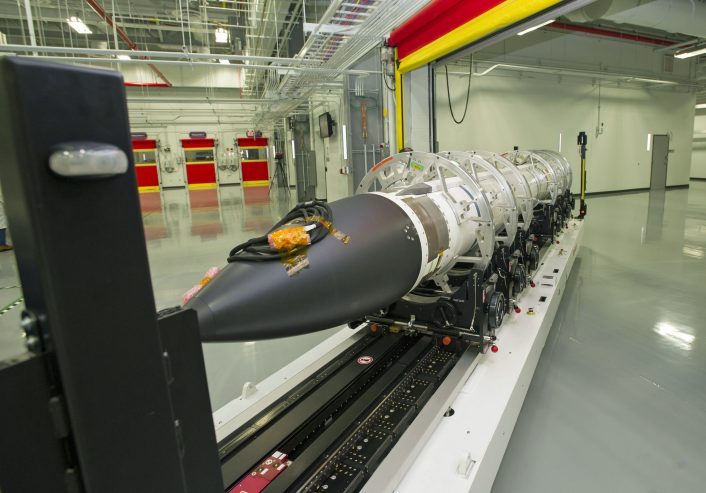USS John Finn Shoots Down ICBM Outside of Atmosphere with Missile Shot.
The U.S. Navy Arleigh Burke class destroyer USS John Finn (DDG-113) became the first ship to successfully shoot down an incoming ICBM (intercontinental ballistic missile) on Tuesday, November 17, 2020. The demonstration of this new capability could provide a new level of missile defense for the United States from incoming attack by ICBMs.
The USS John Finn was positioned off Hawaii for the missile interception test. The test ICBM was launched from the Kwajalein Atoll in the western Pacific. The interception took place outside of earth’s atmosphere where incoming ICBM attacks begin their reentry prior to their terminal attack phase.
The missile launched from the USS John Finn was a Raytheon/Mitsubishi SM-3 Block IIA. Tuesday’s test interception was part of a mission called Flight Test Aegis Weapons System-44 (FTM-44), a developmental test required by the U.S. Congress to determine the possible effectiveness of the Raytheon/Mitsubishi Heavy Industries project SM-3 Block IIA missile in an operational setting. The original version of the SM-3 missile was intended to intercept only shorter-range intermediate range ballistic missile or IRBMs.
BREAKING 📰: “This first-of-its kind test shows the effectiveness of the SM-3 IIA against long-range threats.”
Learn more about the SM-3 Block IIA and its recent successful #homelanddefense flight test demonstration: https://t.co/UP1TqFjTaT pic.twitter.com/vb9nQ6haMy
— Raytheon Missiles & Defense (@RaytheonDefense) November 17, 2020
The Missile Defense Agency released an official statement about the test that said, “FTM-44 satisfies a Congressional mandate to evaluate the feasibility of the SM-3 Block IIA missile’s capability to defeat an ICBM threat before the end of 2020”.

Director of the Missile Defense Agency, U.S. Navy Vice Admiral Jon Hill, told media that, “The Department is investigating the possibility of augmenting the Ground-based Midcourse Defense system by fielding additional sensors and weapon systems to hedge against unexpected developments in the missile threat”. Vice Adm. Hill went on to say, “We have demonstrated that an Aegis BMD-equipped vessel equipped with the SM-3 Block IIA missile can defeat an ICBM-class target, which is a step in the process of determining its feasibility as part of an architecture for layered defense of the homeland.”
The test is impressive because it not only demonstrates the ability of a ship-based anti-missile system to destroy a small, hypersonic target outside the earth’s atmosphere, but also because it successfully linked numerous sensors together to detect missile launch, speed, course and trajectory to prosecute a successful interception and destruction of the incoming threat ICBM.
Prior to Tuesday’s successful test interception, Vice Adm. Hill said in a story by Sam LaGrone on USNI.com, “We can take advantage of terrestrial-based and mobile sea-based systems today to get the tracking data and get that over to a [shooter]. So, we can now take a forward-based ship’s sensor, take what it sees, pass that to a shooting ship and then get the right weapon up to the glide phase. And that’s what we’re working our way through now.”
Sensors in space also played a role in detection of the test launch and interception on Tuesday according to Raytheon. “This first-of-its-kind test shows that our nation has a viable option for a new layer of defense against long-range threats,” Bryan Rosselli, vice president of Strategic Missile Defense at Raytheon Missiles & Defense, said in a company statement.









